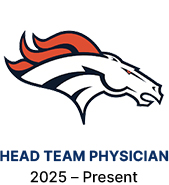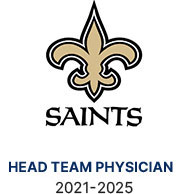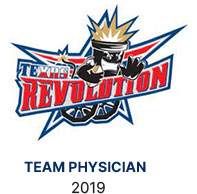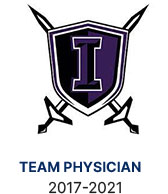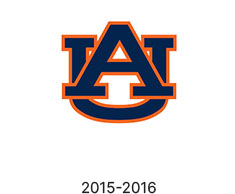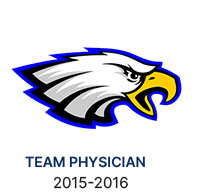What is Revision ACL reconstruction?
Revision ACL (anterior cruciate ligament) reconstruction is a second surgery performed to correct a failed primary ACL reconstruction surgery. Causes of failure may include recurrent instability, loss of motion, infection, and hardware complications.
ACL reconstruction is a surgery to replace or repair a torn or damaged anterior cruciate ligament in your knee with a new ACL tissue graft obtained most commonly from your own body (autograft) or in rare cases from a deceased donor (allograft). Anterior cruciate ligament tears or injuries most often occur during sports activities that involve pivoting, cutting, and turning movements as in football, soccer, skiing, tennis, and basketball. Ligaments are tough bands of tissue that connect one bone to another bone.
Several options exist for revision ACL reconstruction, including utilizing one of the patient’s own tendons, including a hamstring tendon, patellar tendon, quadriceps tendon, or a donor tendon (allograft tissue) may be used as well. Tendons are cords of strong fibrous tissue that connect muscles to bones.
Anatomy of the ACL
The anterior cruciate ligament is one of the major stabilizing ligaments in the knee. It is a strong rope-like structure located in the center of the knee, running from the femur (thighbone) to the tibia (shinbone). The ACL is one of the four major ligaments of the knee that connects the femur to the tibia and helps stabilize your knee joint. It prevents excessive forward movement of the tibia in relation to the femur as well as limits rotational movements of the knee. When this ligament tears, unfortunately, it does not heal on its own and often leads to the feeling of instability in the knee, requiring reconstruction to correct the abnormality.
Indication for Revision ACL Reconstruction
You may need a revision ACL reconstruction surgery if the previous ACL reconstruction has failed due to the following conditions:
- The graft was not accepted by your body properly
- The graft was placed at an incorrect point in the bone
- Early return to high-level activities prior to graft acceptance
- Failure of the reconstructed ligament to heal properly
- Re-injury or re-rupture of the ACL
- Problems arising from the previous surgery
- Other causes of knee instabilities were not corrected during the original procedure
This failure would result in the return of ACL injury symptoms such as swelling, pain, and knee-buckling or giving way (knee instability), warranting a revision ACL reconstruction.
Preparation for Revision ACL Reconstruction
In general, preparation for revision ACL reconstruction surgery will involve the following steps:
- A review of your medical history and a physical examination to check for any medical issues that need to be addressed prior to surgery.
- Depending on your medical history, social history, and age, you may need to undergo tests such as blood work and imaging to help detect any abnormalities that could compromise the safety of the procedure.
- You will be asked if you have allergies to medications, anesthesia, or latex.
- You should inform your doctor of any medications or supplements you are taking or any conditions you have such as heart or lung disease.
- You may be asked to stop taking certain medications, such as blood thinners, anti-inflammatories, aspirin, or other supplements for a week or two.
- You should refrain from alcohol and tobacco at least a few days prior to surgery and several weeks after, as it can hinder the healing process.
- You should not consume any solids or liquids at least 8 hours prior to surgery.
- You should arrange for someone to drive you home after surgery.
- A signed informed consent form will be obtained from you after the pros and cons of the surgery have been explained.
Procedure for Revision ACL Reconstruction
Revision ACL reconstruction surgery is usually performed under general anesthesia in a minimally invasive arthroscopic technique. In general, the procedure involves the following steps:
- Your surgeon will make two to three small cuts, about 1/4-inch-long, around your knee.
- An arthroscope is inserted into the knee joint through one of the incisions.
- An arthroscope is a thin tubular instrument with a camera, light, and a magnifying lens attached at the end that is connected to an external monitor and enables your surgeon to view the inside of the knee joint.
- Along with the arthroscope, a sterile solution is pumped into the joint to expand it, enabling your surgeon to have a clear view and space to work inside the joint.
- Miniature surgical instruments are passed through the other incisions, and depending upon the reason of graft failure, your surgeon may perform:
- A bone grafting procedure in which more bone is filled or grafted into the damaged area/bone tunnels/original area where the tendon was attached.
- If the graft tendon has ruptured, your surgeon will perform revision reconstruction by extracting more tendon from your shinbone or thighbone or utilize a donor tendon and place the ends into your femur and tibia to reconstruct the ACL.
- If the cartilage has ruptured, then your surgeon will shave or repair the cartilage to address the issues arising out of it.
- Finally, after proper revision is confirmed, the scope and the instruments are withdrawn, and the incisions are sutured and bandaged.
- A knee brace is usually fitted for two to six weeks depending upon the severity of your injuries or the nature of the revision performed to protect the graft healing.
Postoperative Care and Instructions
In general, postoperative care instructions and recovery after revision ACL reconstruction surgery will involve the following:
- You will be transferred to the recovery area where your nurse will closely observe you for any allergic or anesthetic reactions and monitor your vital signs as you recover.
- You may notice pain, swelling, and discomfort in the knee area. Pain and anti-inflammatory medications are provided as needed to address these.
- You are advised to keep your leg elevated as much as you can while resting to prevent swelling and pain.
- You will be given assistive devices such as crutches with instructions on restricted weight-bearing for 4 to 6 weeks.
- You are encouraged to walk with assistance as frequently as possible to prevent blood clots.
- Instructions on surgical site care and bathing will be provided to keep the wound clean and dry.
- Refrain from strenuous activities for the first few months and lifting heavy weights for at least 6 months. A gradual increase in activities is recommended.
- An individualized physical therapy protocol will be designed to help strengthen the knee muscles and optimize knee function.
- You will be able to resume your normal daily activities in a month or two, but with certain activity restrictions. Return to sports and full recovery usually takes around 9 months.
- You may return to your work in about 6 weeks if your job is not too physically demanding. Those with physically demanding jobs will require a longer recovery period.
- A periodic follow-up appointment will be scheduled to monitor your progress.
Risks and Complications
Revision ACL reconstruction surgery is a relatively safe procedure; however, as with any surgery, some risks and complications may occur, such as the following:
- Infection
- Bleeding
- Adverse reactions to anesthesia
- Blood clots or deep vein thrombosis
- Damage to adjacent soft tissue structures
- Arthrofibrosis
- Inferior surgical outcome compared to primary ACL reconstruction

